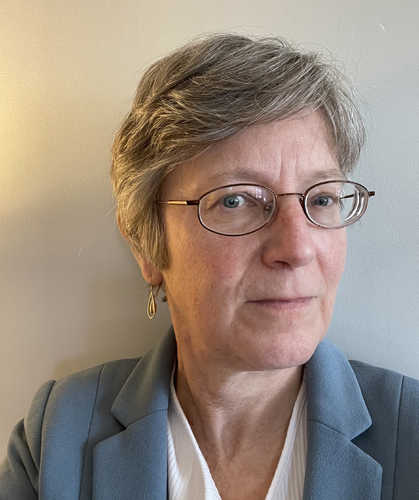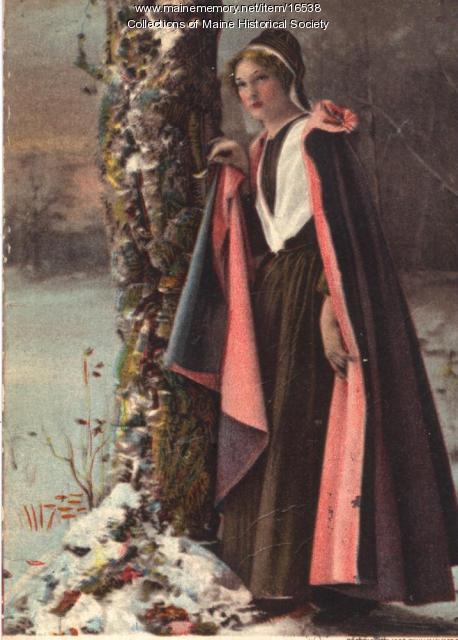Keywords: Couple
Item 102471
Old couple in Vermont, ca. 1910
Contributed by: Stanley Museum on deposit at Maine Historical Society Date: circa 1910 Location: Vermont Media: Lantern slide, hand colored
Item 152238
Unidentified couple holding pamphlet, ca. 1852
Contributed by: Private Collection through Maine Historical Society Date: circa 1852 Location: Maine Media: Daguerreotype
Item 151441
Cottage for Major W. M. Dunn on Cushing Island, Portland, ca. 1891
Contributed by: Maine Historical Society Date: circa 1896 Location: Portland Client: William McKee Dunn Architect: John Calvin Stevens
Exhibit
A Parade, an Airplane and Two Weddings
Two couples, a parade from downtown Caribou to the airfield, and two airplane flights were the scene in 1930 when the couples each took off in a single-engine plane to tie the knot high over Aroostook County.
Exhibit
Notorious: Maine Crime in the Public Eye, 1690–1940 - Public Enemy No. 1: The Case of the Brady Gang
"The suspicious staff notified police. After a couple of days in Connecticut, the gang returned to Maine to purchase more weapons and requested a…"
Site Page
"Richmond Bradford on September 3, 1829. The couple and their family lived in Turner, and eventually moved to Auburn."
Site Page
Blue Hill, Maine - Long Island: The Forgotten Community - Page 3 of 3
"… there were over one hundred residents, a couple of stores, and even a dance hall. Mr. and Mrs. Butler's house, Blue Hill, ca."
Story
Cantor Beth & Dr David Strassler: personal insights on life
by Biddeford Cultural & Heritage Center
The journey of a couple devoted to each other, their family, their community and their religion
Story
The Equal Freedom to Marry
by Mary L Bonauto
Marriage Equality, Maine, and the U.S. Supreme Court
Lesson Plan
Longfellow Studies: The Acadian Diaspora - Reading "Evangeline" as a Feminist and Metaphoric Text
Grade Level: 6-8, 9-12
Content Area: English Language Arts, Social Studies
Evangeline, Longfellow's heroine, has long been read as a search for Evangeline's long-lost love, Gabrielle--separated by the British in 1755 at the time of the Grand Derangement, the Acadian Diaspora. The couple comes to find each other late in life and the story ends. Or does it?
Why does Longfellow choose to tell the story of this cultural group with a woman as the protagonist who is a member of a minority culture the Acadians? Does this say something about Longfellow's ability for understanding the misfortunes of others?
Who is Evangeline searching for? Is it Gabriel, or her long-lost land of Acadia? Does the couple represent that which is lost to them, the land of their birth and rebirth? These are some of the thoughts and ideas which permeate Longfellow's text, Evangeline, beyond the tale of two lovers lost to one another. As the documentary, Evangeline's Quest (see below) states: "The Acadians, the only people to celebrate their defeat." They, as a cultural group, are found in the poem and their story is told.
Lesson Plan
Longfellow Studies: "The Jewish Cemetery at Newport"
Grade Level: 6-8, 9-12
Content Area: English Language Arts, Social Studies
Longfellow's poem "The Jewish Cemetery at Newport" opens up the issue of the earliest history of the Jews in America, and the significant roles they played as businessmen and later benefactors to the greater community. The history of the building itself is notable in terms of early American architecture, its having been designed, apparently gratis, by the most noted architect of the day. Furthermore, the poem traces the history of Newport as kind of a microcosm of New England commercial cities before the industrialization boom. For almost any age student the poem could be used to open up interest in local cemeteries, which are almost always a wealth of curiousities and history. Longfellow and his friends enjoyed exploring cemeteries, and today our little local cemeteries can be used to teach little local histories and parts of the big picture as well.
Henry Wadsworth Longfellow visited the Jewish cemetery in Newport, RI on July 9, 1852. His popular poem about the site, published two years later, was certainly a sympathetic portrayal of the place and its people. In addition to Victorian romantic musings about the "Hebrews in their graves," Longfellow includes in this poem references to the historic persecution of the Jews, as well as very specific references to their religious practices.
Since the cemetery and the nearby synagogue were restored and protected with an infusion of funding just a couple years after Longfellow's visit, and later a congregation again assembled, his gloomy predictions about the place proved false (never mind the conclusion of the poem, "And the dead nations never rise again!"). Nevertheless, it is a fascinating poem, and an interesting window into the history of the nation's oldest extant synagogue.















